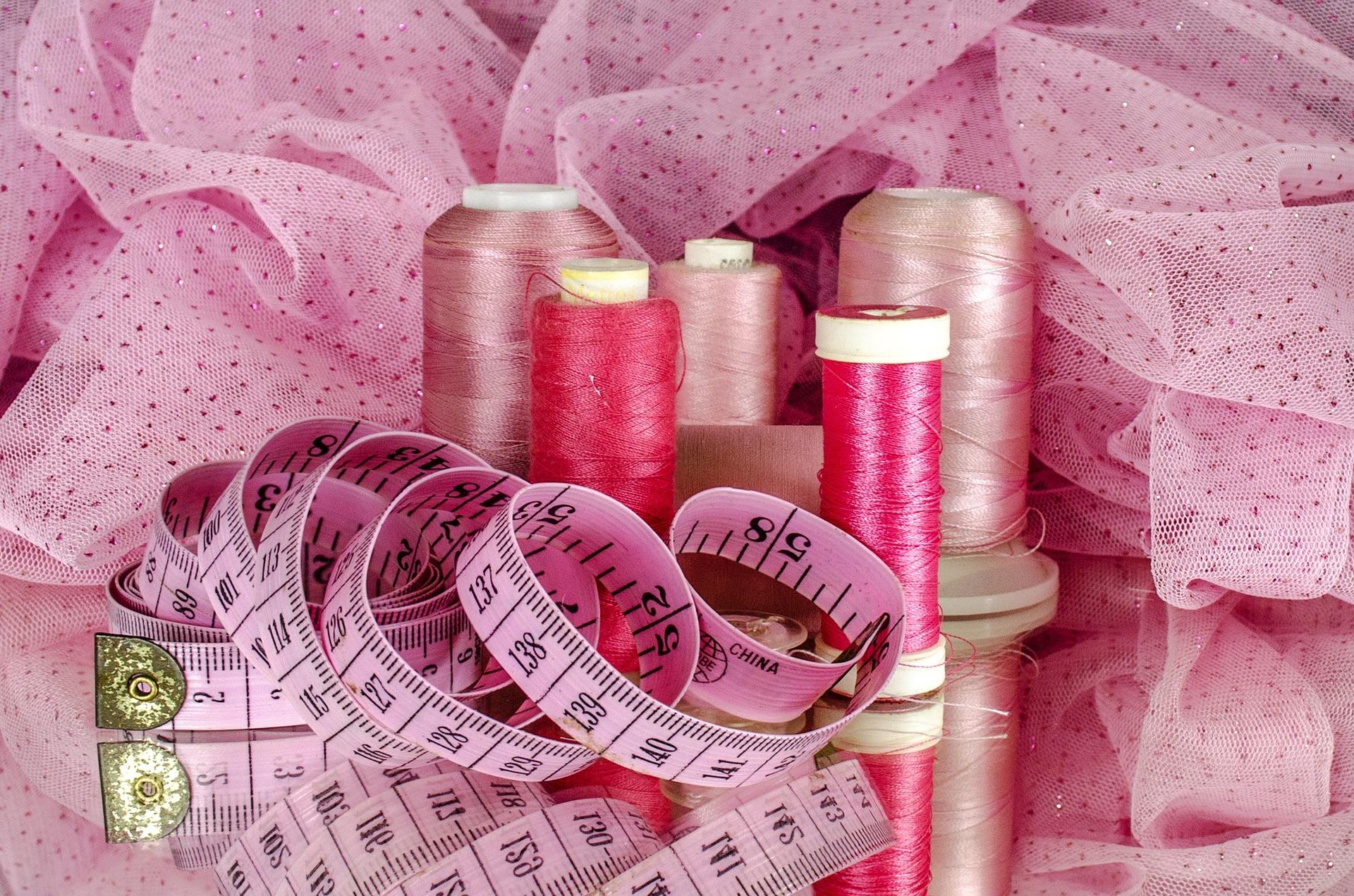Learning to sew can take some time. However, once you do, you can make yourself a new wardrobe with a cute dress or by sewing a t-shirt. Whether sewing a bag, customizing your jeans, decorating a tote bag, or using a serger, there are many different ways to learn how to sew.
Just like cross-stitch, crochet, knitting, embroidery, and patchwork, sewing requires dexterity and passion when it comes to folding, tracing, cutting, etc.
So get a few free patterns, some fabric off-cuts, crowbar, a thread, canvas mount, and a sewing kit and follow a few guides.
Whether you’re starting a sewing blog, setting up a haberdashery, or just for yourself, here’s what you need to know about the French seam and some advice about it.
A seam joins two or more layers of fabric, silk, leather or other clothing materials with stitches in the sewing process. Before the production of the sewing machine, all sewing and seams were handmade. Today seams are mass-produced by automated machines for household textiles, sporting goods, and other clothing needs.
Sewing a seam is a fundamental sewing skill for everyone to learn. When you learn to sew, it is simple to do but, they are just about a few decisions that will make your sewing look great and smooth. This means that you can have good sewing skills, but there’s a lot that could make it go wrong.
In cloth making, different seams are categorized by their type and position. By type, they are classified as plain, lapped, abutted, or French seams. Whether you’re starting a sewing venture or sewing for yourself, here are all the secrets and processes involved in how to sew a French seam.

What is a French Seam?
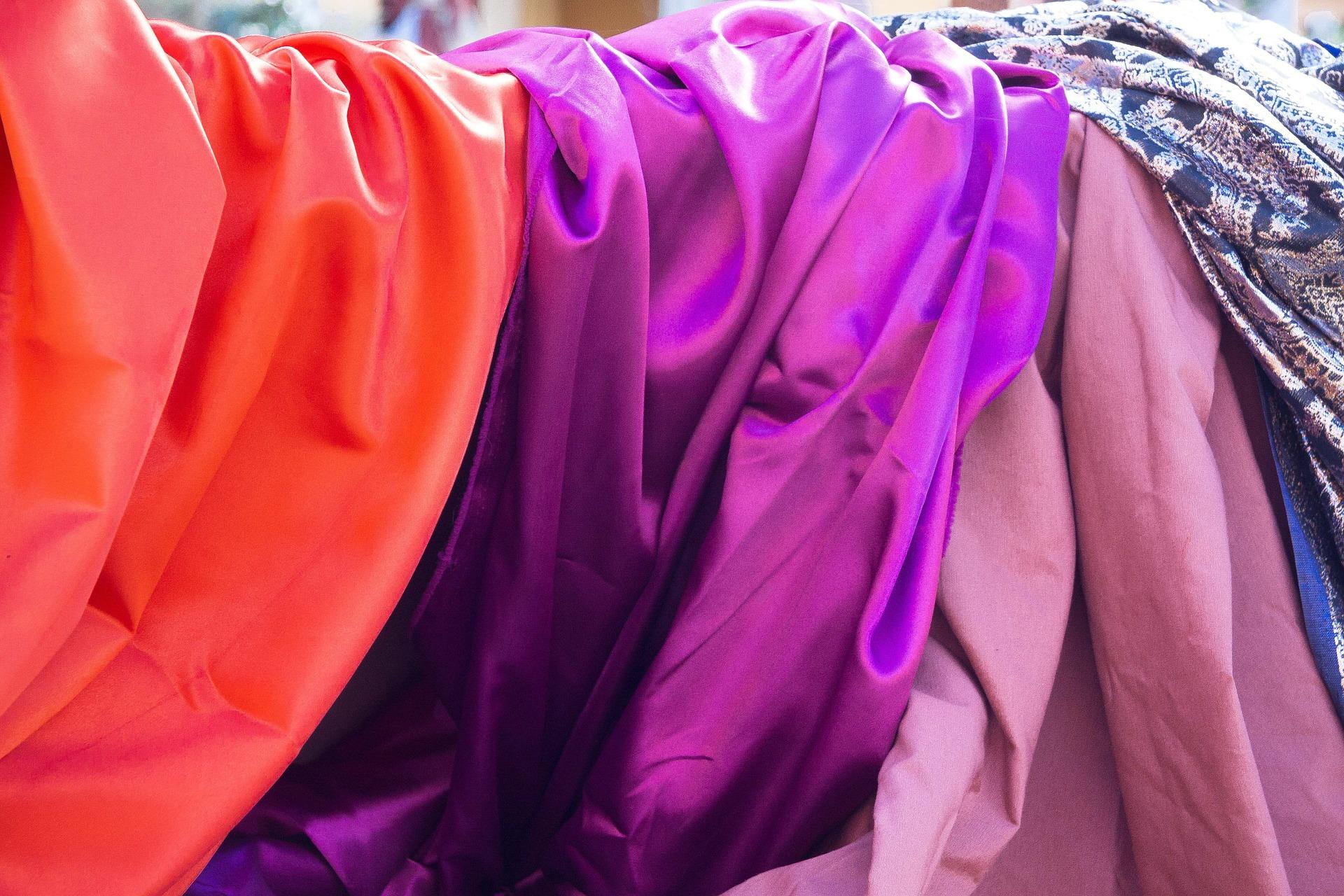
When you first start a new hobby, it can be difficult to understand all the different terms and vocabulary you come across in books and tutorials. Without a teacher by your side, you can quickly get bogged down.
It is true that many other hobbies, such as cycling and swimming, writing, acting and singing, people often opt to go it on their own and learn as they practice. They may pick up tips for better performance from more experienced practitioners of their craft but, overall, they are quite satisfied digging into the meat of things without any education on how to make the most of it.
Sewing is one hobby that, in order to not quickly become discouraged and give it all up, you would need a bit of training - if only at the hands of someone in your family who is experienced in the needle arts.
Mastering the basics, such as hemming your new trousers or repairing a split seam are fairly straightforward. Conversely, sewing your own designs requires a bit more knowledge and skill.
You would need to know how different fabrics act under your sewing machine's treadle - jerseys would tend to roll while silks would require finer stitching, for example.
Taking sewing classes on Superprof is a good way to start.
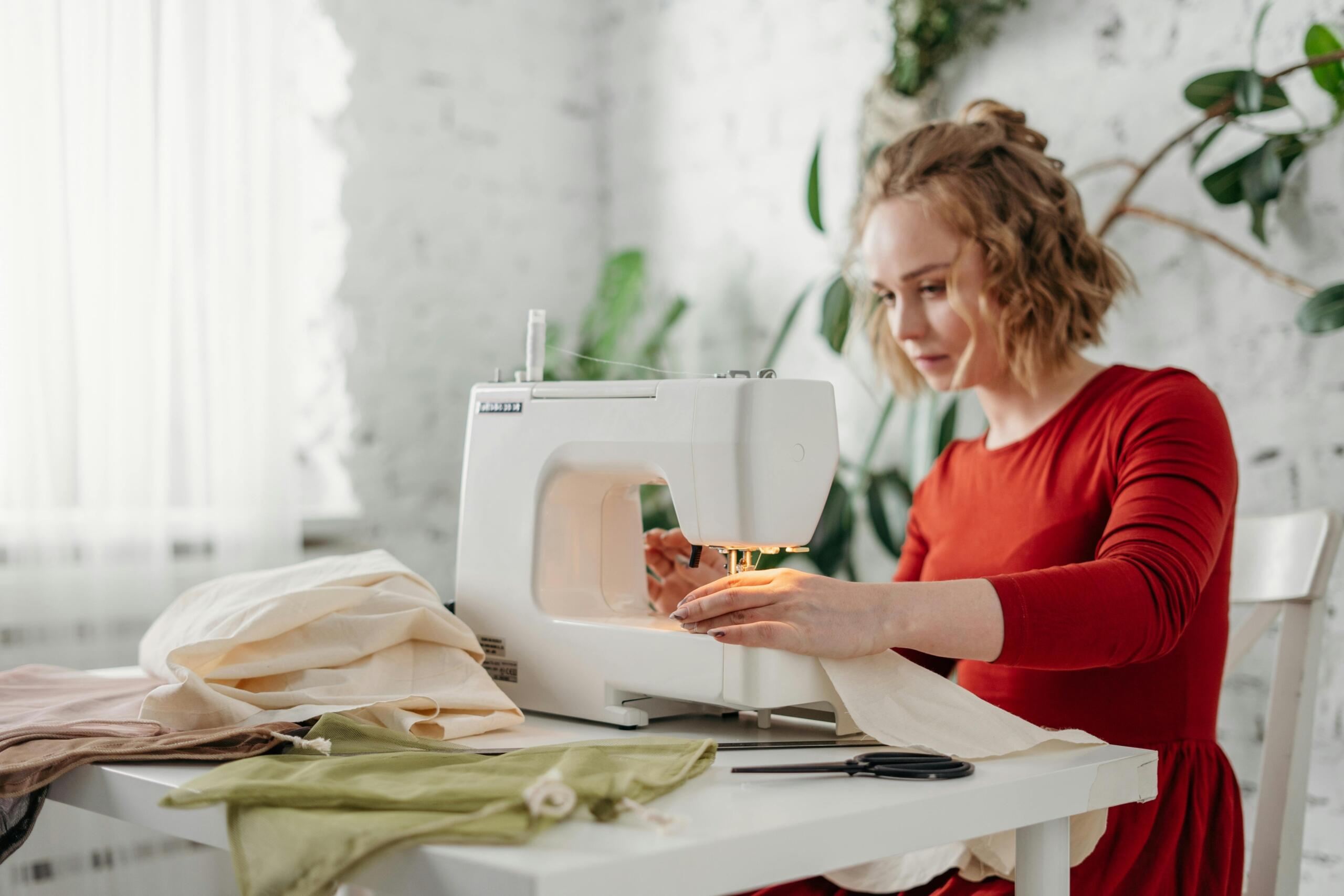
You would also need to know the different types of stitching that would make your creations both beautiful and functional - a running stitch would not hold as seam as securely as a backstitch would and a basting stitch is no substitute for a running stitch, just to name two.
So what is a French seam?
If you know anything at all about sewing, this is a term that you’ve probably heard before.
A French seam is “a seam with the raw edges enclosed.” You’ll not be able to see the edges of the fabric.
It’s also sometimes called an “invisible seam” owing to the fact you can't actually see where the stitches have been made.
Seams are the foundation of the clothing-making process. Understanding how clothes are made and learning how to make a seam is essential to learn to sew.
A French seam is a sophisticated sewing technique in which the clothing of fabric is folded on itself twice. This dual folding design makes the seam much more durable and long-lasting than other regular seams. It is a form of seam finishing employed in sewing where the raw edges on the inside of the fabric are entirely enclosed in an extra layer of stitching.
This makes the clothing last longer and creates a seam as attractive on the outside as it is on the inside.
French seams are worked on twice;
- Initially sewing both front sides together from the wrong sides of the fabric
- Then once again, after the first seam is done, ironed, and folded.
French seams are very comfortable to wear with no fraying or stray threads. It ultimately renders the lines and stitching invisible. It works only on fabrics that are woven, which are clothing without stretch.
The French seam technique is not specified for any particular clothing style or type of sewing. It is used to make clothing like set-in sleeves because of their curves and their bulky nature.
French seams are fundamentally used for lightweight clothing such as chiffon and silks. It works well where using standard seam techniques will be effortlessly conspicuous on the right side of the dress. They are also used often when the fabric is too fragile to overstretch the seam allowance and prevent unraveling.
The aftermath of creating a French seam offers a refined and sophisticated look to clothing. It achieves this while also concealing the thread on its edges. It is also perfect for fabrics that might be repeatedly washed, such as pillowcases and towels.
Don't let that name fool you! There is a world of difference between a French seam and a blind stitch which, if properly executed, also results in invisible stitching.
You might find examples of blind stitches in the hem of your trousers, skirts or dresses.
The French seam technique is very popular among seamstresses and designers because of the lovely finish it provides. The clothes appear more sophisticated and more carefully crafted because there's no visible thread holding the pieces together. Furthermore, it makes for a much stronger seam because it is folded over on itself and doubled.
It is also a seam that is very comfortable to wear. With no fraying possible and no stray threads - in fact, no threads or stitching visible at all, it won't be likely that such a seam could irritate as it rubs against you or that a random thread would come loose, causing you to scratch frantically in an effort to quell the tickling.
It makes the work very professional-looking. However, anyone can learn how to do the French seam. It requires more patience than your typical seam. In fact, a French seam needs to be worked on twice.
- Once with the "wrong" sides of the fabric
- Once again once the first seam is complete, folded, and ironed
The technique isn’t hugely complicated but it can be time-consuming. Once you’ve mastered it, you’ll start being able to do it more and more quickly. It was quite the revolution when it came to sewing.
Did you know that in French, they call it the “couture anglaise”, which means “English seam”?
Living in the fashion capital of the world, find sewing classes London and give your wardrobe a new life.
What Are the Benefits of Learning How to Sew a French Seam?
French seams are predominantly used on straight seams rather than curved seams. It is a seam pattern that can be used on edges and corners as well. It is well suited to light and average weight clothing but not good on heavier fabrics as they provide a lot of bulk to the inside seam.
After you get over the fear of attempting your first French seam, you will be amazed at the level of excellence you’ve accomplished. You could quickly learn French seam from sewing workshops or sewing lessons and become adept at different sewing patterns while engaging in sewing projects.
See sewing courses here on Superprof.
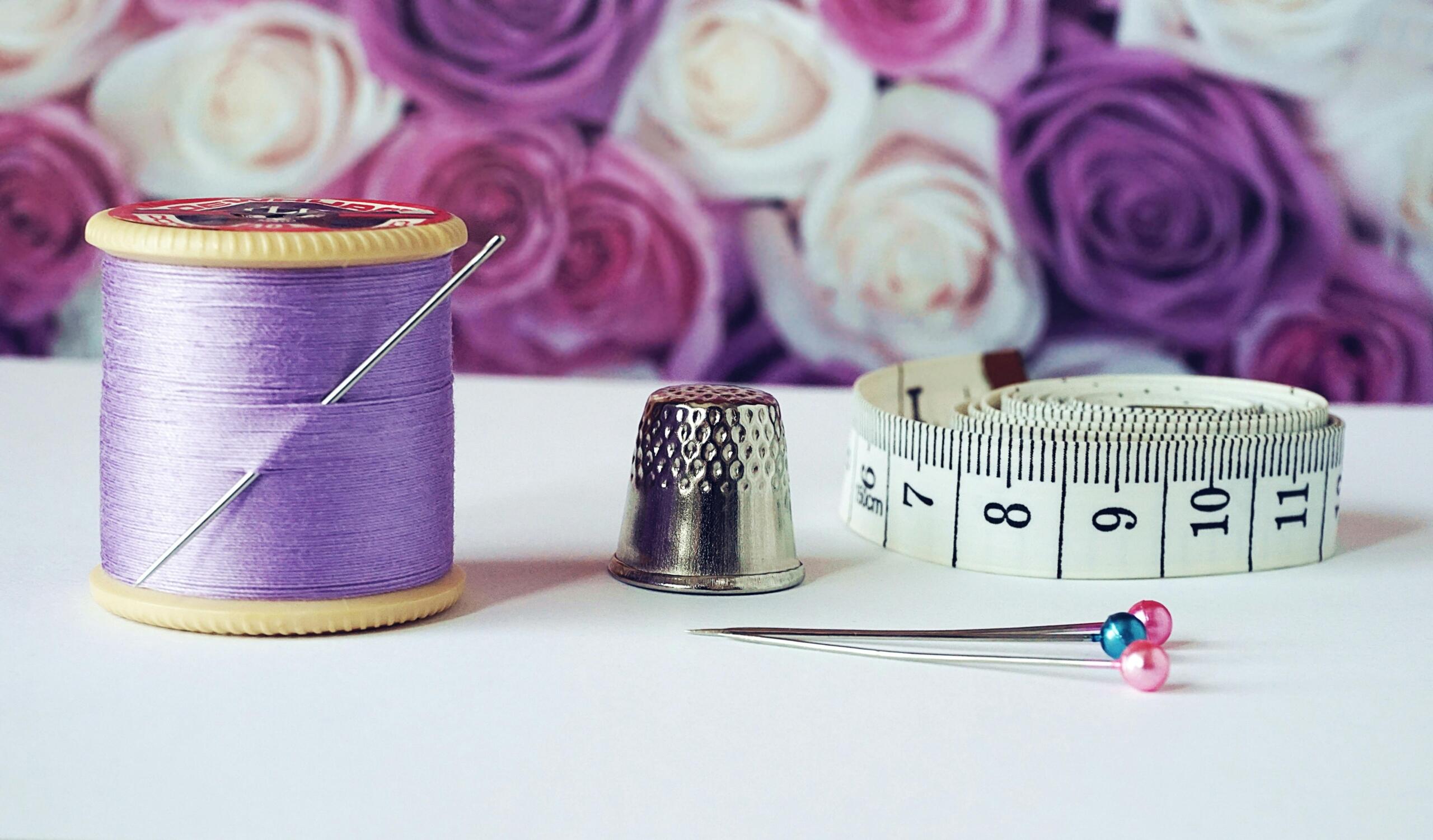
Different sewing platforms offer classes based on varying sewing themes and techniques. You will understand how to sew a French seam and sew projects like hemming, customizing, switching, and overcasting. You will also learn how to use sewing materials like suitable needles and other sewing tools.
If you’re solely captivated by the French seam, you could register for courses that will teach you how to make it quickly.
With a bit of practice, you could learn to follow the sewing patterns and other directions.
Learning how to sew a French seam will enable you;
- Produce neater finishes on the inside of the clothing when sewing
- Create more potent and more durable seams that last
- Give your dresses that high end and clean feel
- It teaches you more precision in sewing and how to make the best out of the structure of your fabrics.
- Make a good profit from sewing as the technique is highly valued.
French seams are primarily used for pillowcases, sheer fabrics, silk, and linen seams. These pieces of clothing are often washed, and they require this type of seam.

Why Use a French Seam?
What’s a French seam useful for?
There are several advantages to using a French seam: It can make the edges of your garments seem more elegant and the fabric is less likely to fray, the longer you have and wear that garment.
Perhaps the best reason to incorporate French seams into your sewing repertoire is that no one will see any defects in your stitching or in the finished garment, no matter how critical and keen their eye!
We're not saying that you, specifically, are bound to make mistakes while sewing; just that such mistakes are common and, rather than make frequent use of your seam ripper and starting again - at the risk of damaging your fabric, why not make the French seam a standard practice?
Why should you choose this type of seam over another?
This technique is useful for people who are sensitive to seams, like babies. As adults, we would be hard-pressed to feel the difference between a thread and a type of material but the youngest humans, with their brand new skin - so very sensitive is it, that they might compare the abrasiveness of thread to steel wool, especially next to the softness of terrycloth.
Naturally, babies are not the only people with hyper-sensitive skin, as we've alluded to above. If you or anyone in your circle proves to have such a sensitivity, you may make them a few shirts or dresses with French seams because that type of seam won’t directly touch their skin.
Designers like incorporating the French seam in designs of clothing that doesn’t have a lining. The technique can be used to hide the seams in the same way that a second layer of cloth (a lining) would.
As you might have intuited, today's fashions do not always permit a lining, so a French seam is the next best step to hiding seam flaws - yes, even designer labels sometimes bear minute flaws in their cutting and stitching!
To say nothing of the fact that French seams are far more elegant than serged seams.
Besides lending garments an obvious distinction, the French seam is really useful for thin, light, or even transparent materials. You may find it adds an extra layer of strength to your silk, jersey or nylon creations.
In fact, most experienced seamstresses advocate for the French seam if you are working with silk!
Although a serger has nearly the same effect - in that your edges won't come unraveled and that they can be ironed flat, they don't have the elegance, style and comfort that a French seam offers.
But then, not everyone has such a machine; nor does everyone have access to one. Should that be your case, you may consider the French seam as a good alternative when you don’t have a serger.
As the French seam allows for very smooth edges, if you get used to making them, you might find you don't need a serger at all!
Even if you’re a novice to the needle arts, the technique involved in sewing French seams is quite simple. It offers further benefit if you were to sew clothing that should have a lining; such ambitions projects call for skills that, perhaps, you don't yet have mastery of.
Rather than attempting to marry two disparate fabrics together, say a cotton dress with a nylon lining, why no leave off the lining altogether and opt instead for the French seam? You can always learn how to add a lining later, once you feel more confident behind your sewing machine.
There are so many online sewing tutorials you could learn the technique of executing French seams from! Naturally, we'll feature the best of them a bit later in this article but, for now, with your Superprof's help, it's time to try your hand at stitching a French seam.
Keep in mind that you can only really use a French seam on straight edges like the shoulder, side or the bottom of a t-shirt. It’s almost impossible to use this technique on round seams like on a collar.
Don't forget: be patient! This technique takes more time to execute properly than any ordinary seam does; you will have to sew, fold, iron, cut and resew - far more steps than regular stitching! Now, on with the lesson...
Did you think that sewing was just for women?
What Are the Materials Needed for Sewing a French Seam?
The question is prevalent among newcomers in making seams. You will have to master the basics of sewing already and have a reliable sewing kit. Having more sophisticated equipment helps, but you can accomplish as much with a simple kit, so no worries.
For starters, you will need;
- A pair of scissors
- Needles; and
- Threads
A tool like an iron and a sewing machine will be very helpful, but they are not necessarily essential. Besides, you will only benefit from doing a French seam with a sewing machine if you are adept at using it. You could quickly get affordable sewing machines in Canada that meet your needs.
Some French seam methods rely heavily on a sewing machine, and for some others, using only your hands will suffice. Whichever method makes you feel more comfortable and adept should be your go-to choice.
Other sewing tools will come in handy when doing hemming and you can get these tools cheaply at your local tailor shop. When sewing, choosing a comfortable location with a lot of space will be your best option. You can easily concentrate and move about while learning your sewing patterns.
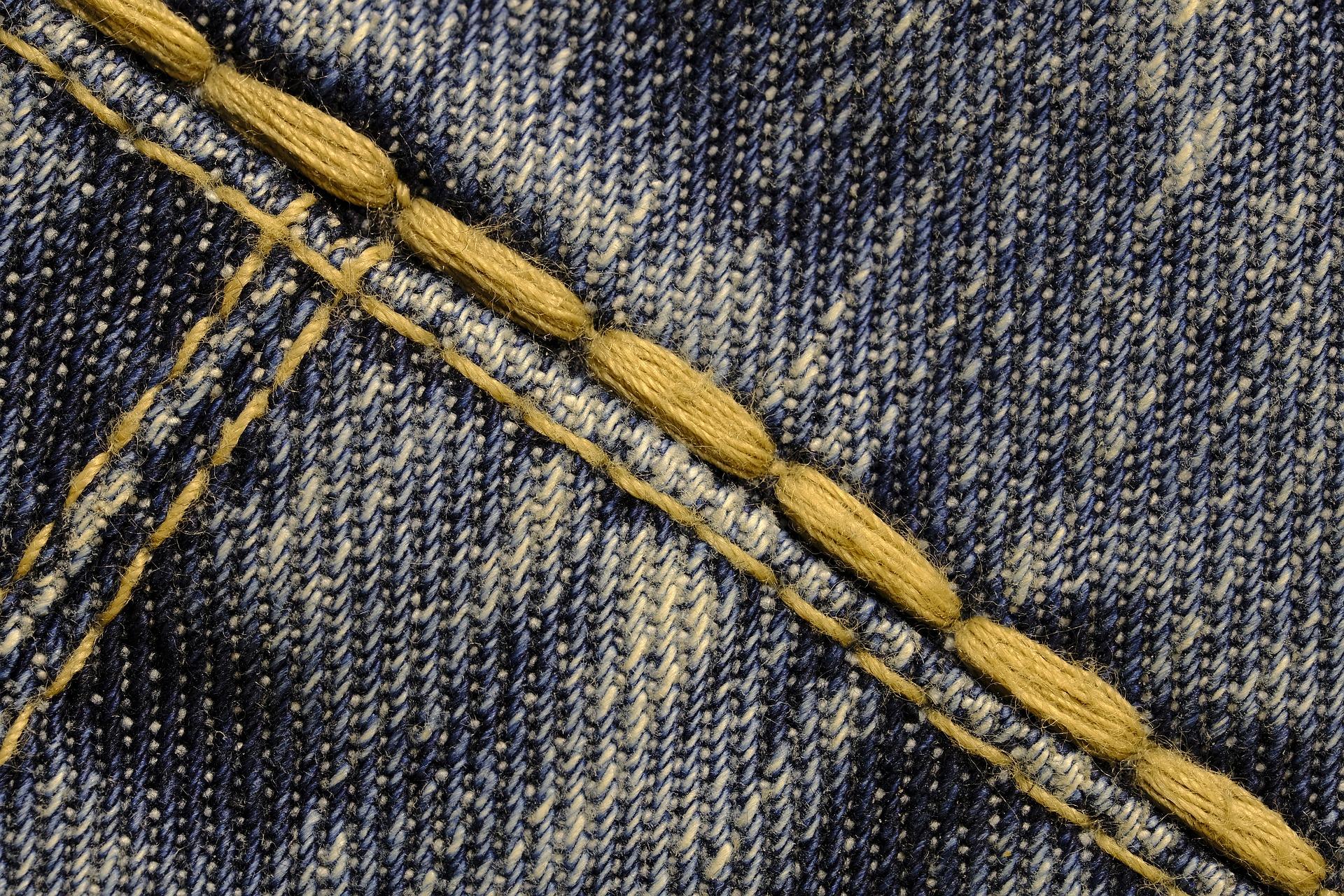

How to Make a French Seam
It’s much easier to understand a French seam once you’ve tried it at least once. This will give you a better idea of each step you have to do and exactly how you perform each one.
So here are a few ways to make your first invisible seams:
Step 1 - Sew the Seam
You should start by joining the inner sides of your clothing together. This simple step highlights the significant difference between a regular seam and a French seam. Usually, for a standard seam, you would start with the right sides when stitching.
Putting the wrong sides together may seem a bit unusual at first, but you will quickly get accustomed to it. You continue by stitching the seam in a particular pattern with a one-quarter seam allowance.
Step 2 – Trim the French Seams
Here you trim the seam allowance by using sharp scissors to attain a clean edge. As you continue, it is best not to rough handle the corners to prevent them from fraying constantly. Depending on the corners, you may have to trim them diagonally to reduce bulk.
Step 3 – Unfold the French Seams
Then, unfold the seams with the right sides and press the entire length of the previously trimmed seam allowance. You are to press the two extremes flat to one common side carefully without pressing open the seam. You should make use of an iron that suits the fabric.
Step 4 –Press the Right Sides Together
Carefully press the fabric in half with the right sides combined and with the seam on edge. In doing this, make sure your stitching is on edge and not to the sides to get an accurate result.
Step 5 – Stitch the French Seams
You can do this by sewing the seam from about a quarter inch from the edges. This makes the previous seam allowance bundled together in the fold. This step can be pretty delicate as doing it wrong will enable tufts of raw edges to poke out the seam.
Step 6 – Final Press
With this final step, while the seam allowance is still on the corner, you should press the seam open again. Gently flip your seam over and give the inside a final press, so it stays firm and flat. Then viola! You have a French seam.
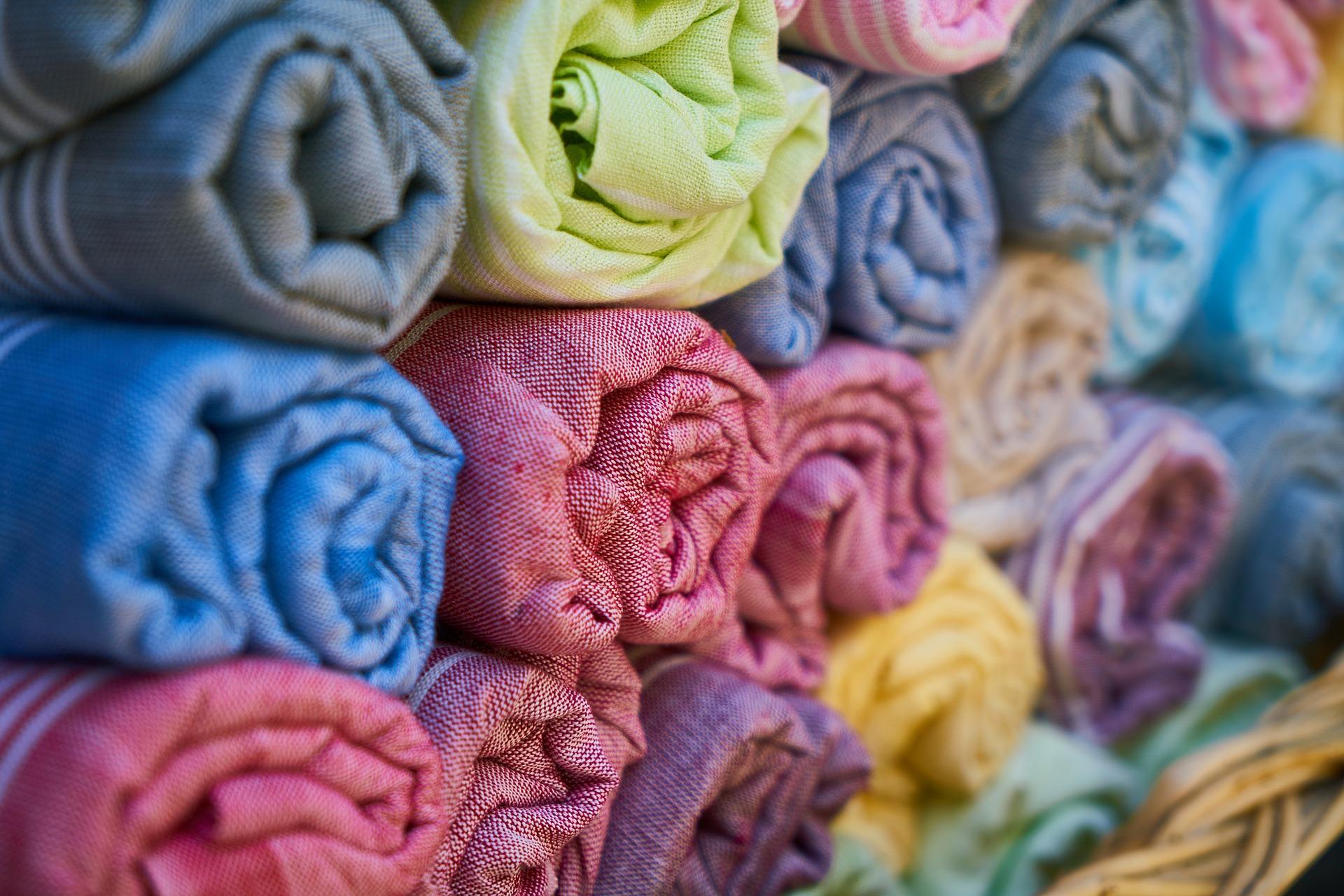
What Sewing Equipment Do You Need?
Do you need any special equipment to make a French seam?
This is a question that’s commonly asked by beginners. You need to know how to sew and you’ll be fine with a basic sewing kit. If you have better equipment, you’re more than welcome to use it. However, if you don’t, don’t worry!
An iron is useful but not essential. Except if you want to use fusible interlining!
The same is true for sewing machines. Some seamstresses often ask which techniques should be hand-sewn and which should use a machine. The best technique is the one that you feel most comfortable with.
You won’t necessarily go faster with a sewing machine if you don’t know how to use it. When it comes to sewing, make sure you’re enjoying it!
The bare minimum you’ll need is:
- Some thread
- A needle
- A pair of scissors
The tools you’ll need for a French seam will also be useful when doing other types of hem. You can find this equipment quite cheaply and start learning how to sew without bankrupting yourself.
You need to carefully choose where you’re going to sew as well. Choose somewhere where you have a good amount of space and you feel comfortable.
Can Online Tutorials Help You Learn How To Make A French Seam?
Online tutorials can get you started on your French seam journey. You could also check out sewing blogs, sewing tutorials or get a tutor online to teach you all you need to know about varying seam techniques.
Discover sewing courses in Canada from Superprof, where we have a handful of French seam experts and other experienced tailors at our disposal. You need to go on the website and select a profile that matches your learning requirements, and you are good to go.
If you are more interested in learning the French seam without going through many YouTube videos, you could quickly go to Superprof to learn from the source.
The French seam has come to be a very vital and valued technique in the world of sewing. Regular seams take a few hours to make but, the French seam can take a few days to weeks, depending on the style of the garment to be completed.
Learning this seam technique is sure to get you some glowing sewing recommendations. You could quickly learn the French seam, look for where to acquire good sewing machines in Canada, and be well on your way to filling a thriving fashion trade.
The Best Sewing Tutorials Online
Some of us know firsthand the frantic feeling one has when searching the Internet for just the nugget of information needed or just the guidance being sought without having to wade through pages and pages of search results that have little to do with the topic at hand.
Have you ever experienced such a frustration? If not, you could try looking up the history of the French seam; when it first came into vogue and who capitalised on that new type of stitching!
However, as you are most likely much more interested in learning how to make a French seam than combing through Internet sites, we withdraw our challenge and present you with some of the best places you can get online tutorials for French seams and any other sewing quandaries you may have.
Sewing.Com
From their clever logo (the I is a needle and the O is a button!) to their informative, easy-to-digest articles, this site is a delight for anyone interested in plying a needle, be they new at the art or a seasoned veteran with sewing room to work in.
On their site you will find a complete guide to stitching, from basic stitches to the more difficult to execute pick stitch used for hemming quality garments.
You will find a page of vintage patterns, some you can download for free and others that require payment of a small fee. Another page has helpful information regarding how to organise your sewing room, how to alter clothing and sewing your home decor.
What we found most helpful is their page on sewing techniques.
Under that tab, you will find a list of sewing hacks to make every project easy to sew. Do you have trouble sewing in zippers? Do your buttons always fall off? Are you perpetually frustrated when sewing elastics and gathering fabric? Sewing.Com has all of your answers and more.
However, if you are a beginner at sewing, you would most likely be more interested in their Sewing for Beginners video tutorials that cover everything from how to make a scented sachet to creating a lace skirt.
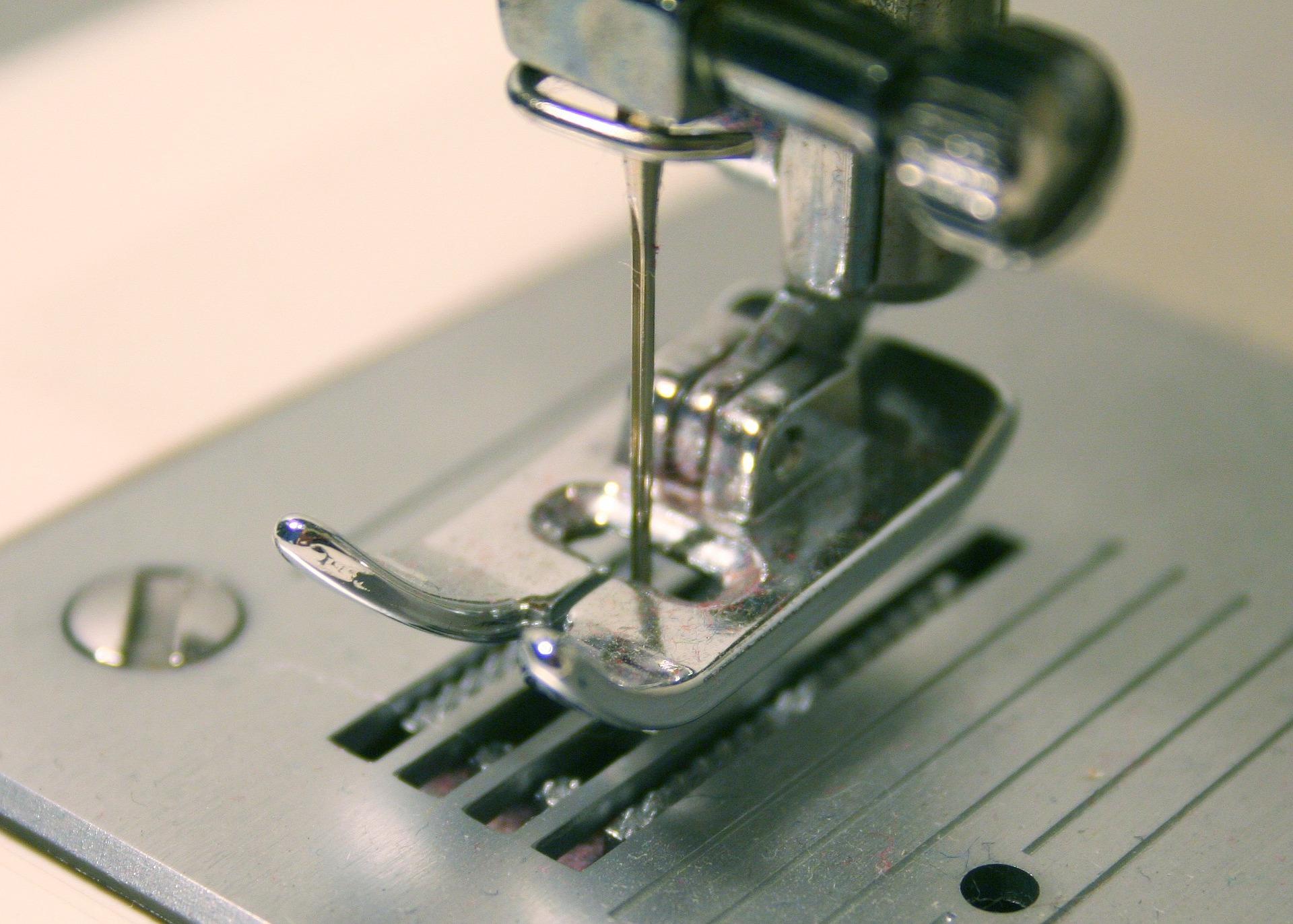
The National Sewing Circle
This is website curated by 4 wonderful and talented American seamstresses who have built a database of instructional videos; some you can watch for free and others for a small fee.
Their 'Core Skills' section includes videos on topics that range from the technical - how to adjust the bobbin on your sewing machine, to the practical: how to sew invisible zippers.
As your sewing skills progress, you may appreciate their Finishing Touches sector or browse through their Design Workshop. Of course, you may refer to their Tips and Techniques video collection at any time during your sewing experience
At this point, you might be wondering why we haven't yet mentioned YouTube...
There are indeed plenty of YouTube sewing channels; some of them demonstrating rather advanced techniques. However, what we've seen of them is such a hodge-podge of of the art; there seems to be no clear progression between threading a needle and finishing a garment. You would most likely end up going from video to video, wondering why it is so difficult to find easy-to-follow sewing lessons.
We're not saying stay away from the site and don't watch any of what there is on offer there; we only wish to point out that there are better online tutorials available to get you starting with your sewing projects.
Much to our good fortune, several experienced seamstresses have put together compilations of the best online sewing tutorials, conveniently located on a single web page:
- Sew Some Stuff has put together 12 of the best sewing tutorials on the 'net in an easy to follow format.
- Not be be outdone, Seams and Scissors has compiled 10 videos of basic sewing skills, from sewing buttons to using bias tape
- Seasoned Homemaker Leslie has foraged around as well; her site also boasts a list of instructional sewing videos!
Profession Pincushion may just be the best site for online sewing tutorials!
Sponsored by Spiegel, the online clothing retailer, Professor Pincushion has over 350 free video tutorials covering a wide variety of sewing-related subjects. However, it is their page titled Sewing Class that really eliminates the competition.
Professionally organised by topic - Thread 101 to What is a Tracing Wheel, these videos each last around five minutes, telling you all you could want to know about any sewing implement or technique. There is even a video on how to sew a French seam and a mock French seam!
One word of caution, however: the videos are narrated in American English. You could encounter some terminology you might not be familiar with and the accent might make these videos a bit hard to understand.
All over the Internet you can find sewing tutorials online but, overall, for quality learning, the best solution is always to find a teacher or mentor to work with.
Getting together with others who are passionate about needle arts is a step in the right direction; you may find a group you click and, perhaps, even a mentor to learn from through The Sewing Group.
How Can You Learn to Make a French Seam?
If you’re worried about attempting your first French seam or you’d prefer to get to grips with the basics before you start, you can always get someone to help you.
If The Sewing Group doesn't quite feel right, have a look around for sewing workshops or sewing classes for beginners and start learning to sew and don’t forget to check out Pinterest for inspiration, too!
A lot of sewing organisations offer lessons around certain themes (sewing for children, overcasting, zippers, customising, sewing a button, hems, choosing the right needles, etc.). You can find courses that last just a day and learn how to do a French seam. It’s rare that they’ll last any longer than this. You’ll also learn how to follow patterns and the different steps involved.
You could also choose a private tutor. They’ll help you learn how to do a French seam as well as other sewing techniques. Whether you’re a beginner, intermediate, or an expert, private tutorials can work around your schedule.
There are also sewing tutorials, sewing blogs, and haberdasheries. You have to choose which one works the best for you. Don’t forget that this is a technique that’s used a lot in haute couture and at respectable fashion houses, too!
Discover sewing course from then to now or take online sewing classes. You can also check sewing classes Glasgow, in Manchester or Leeds.
Learn from the greats of the fashion world.

